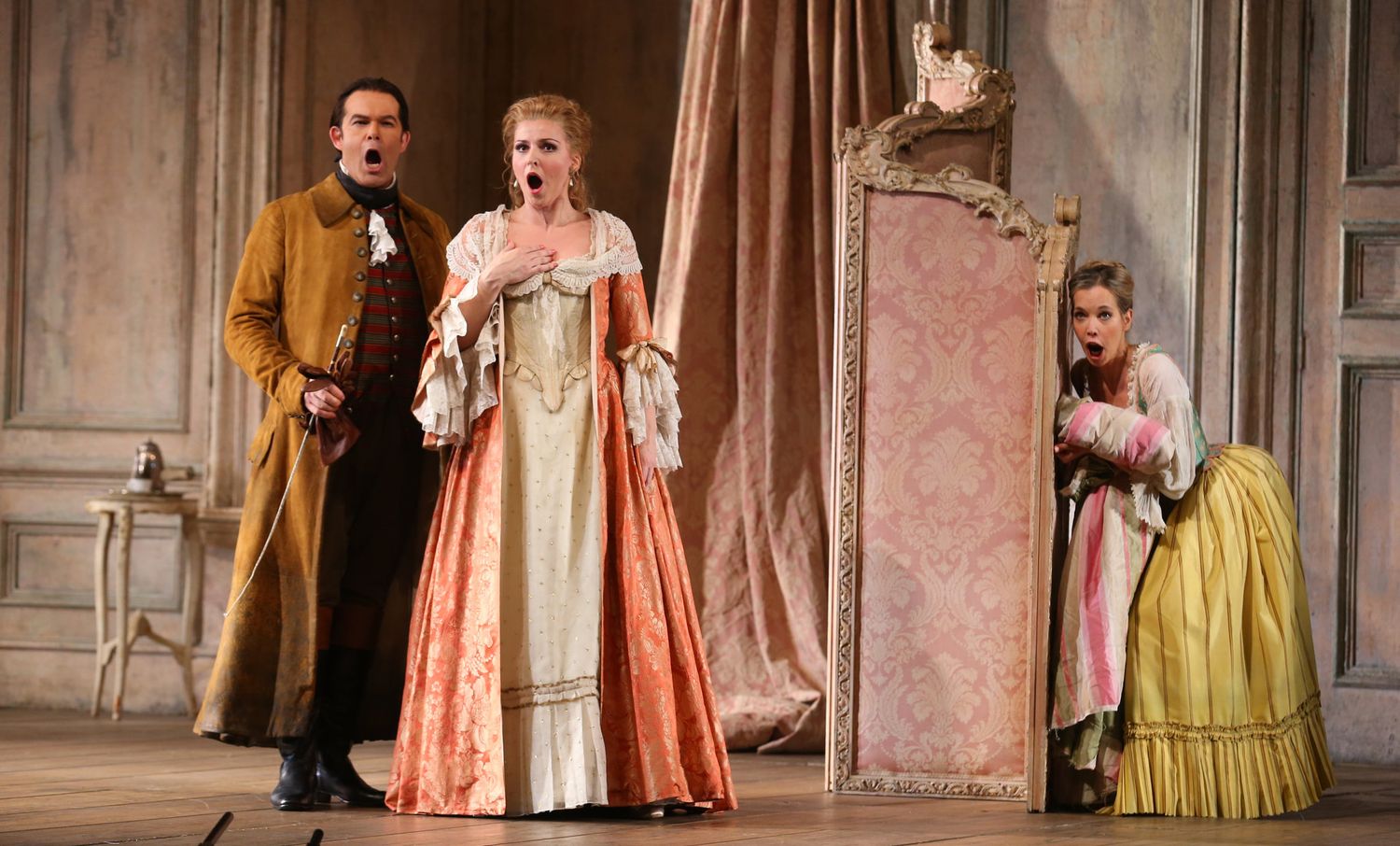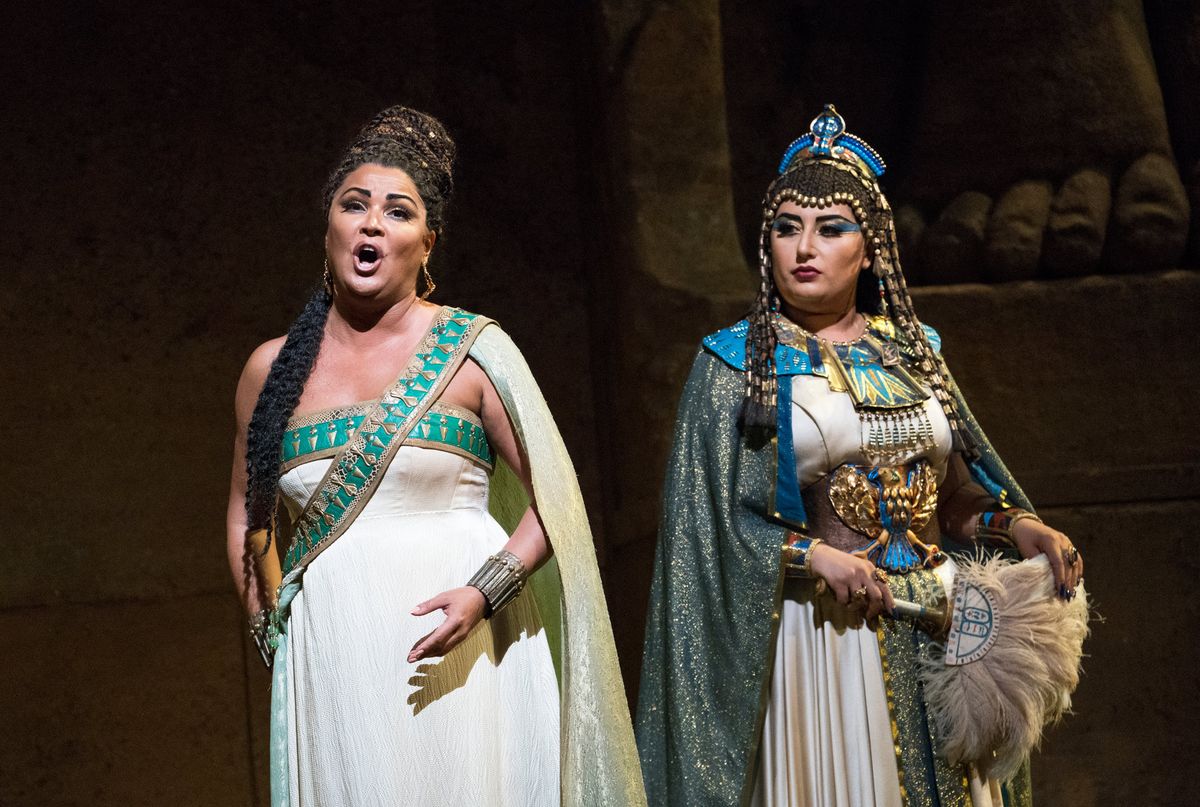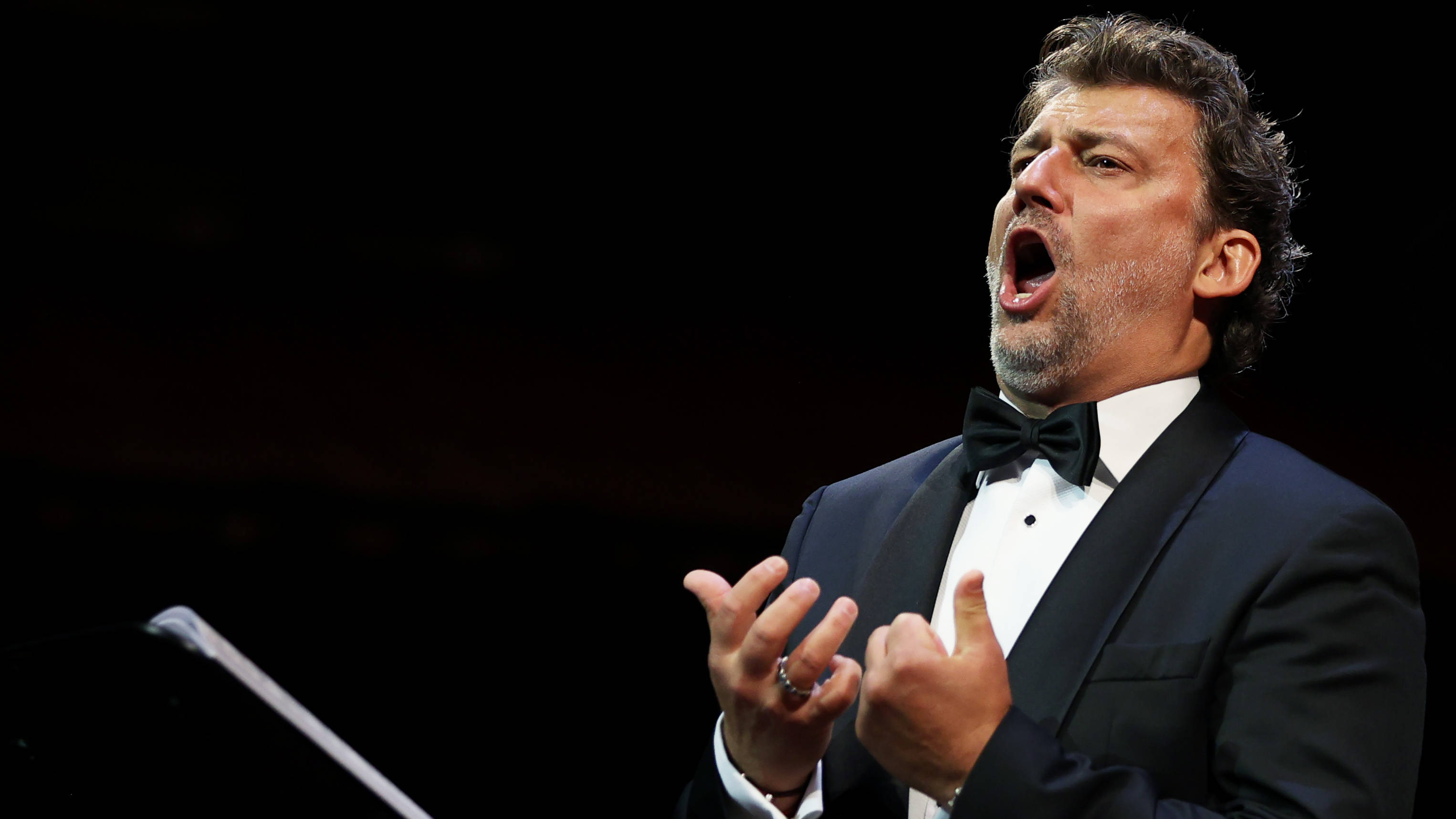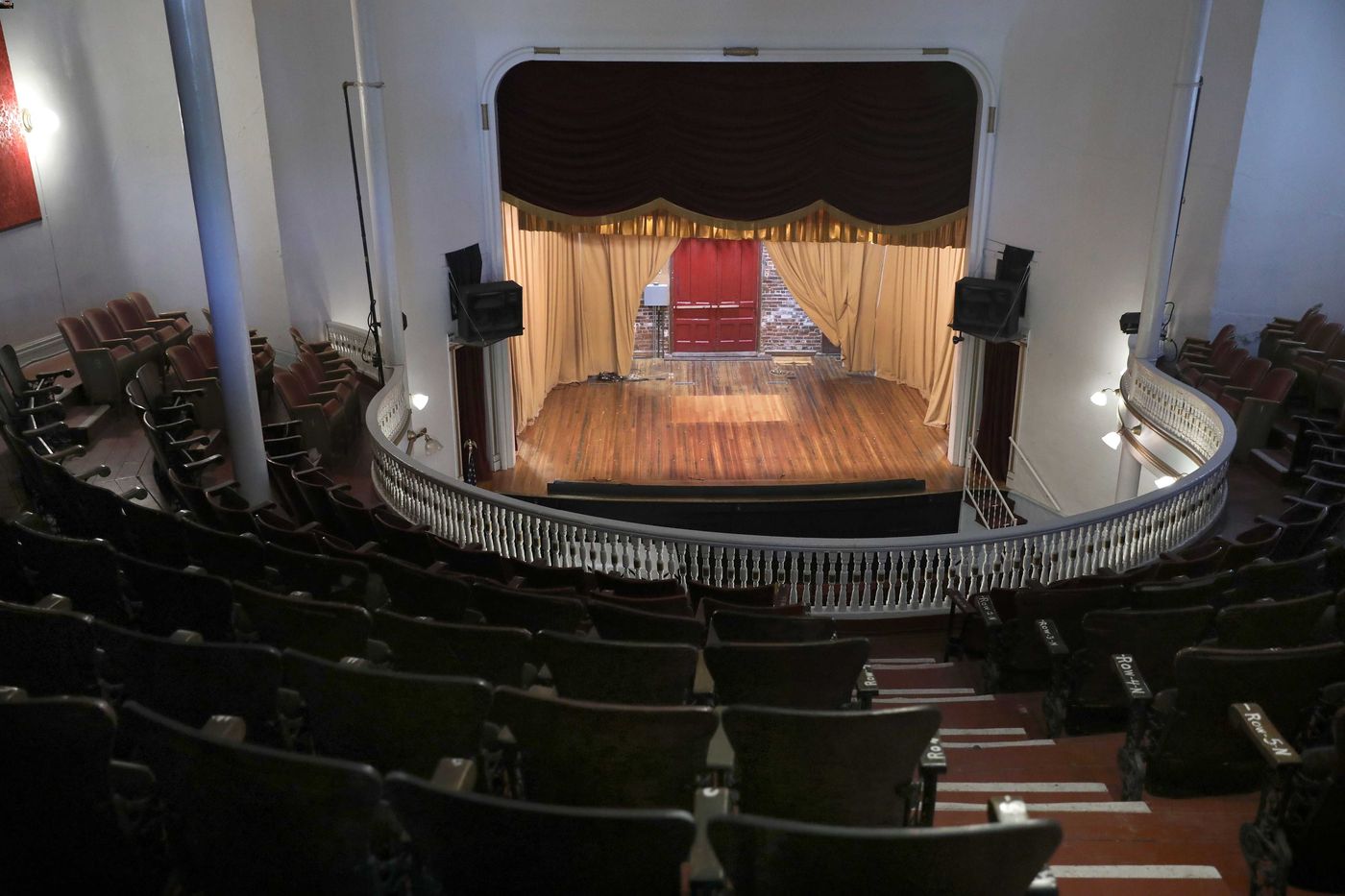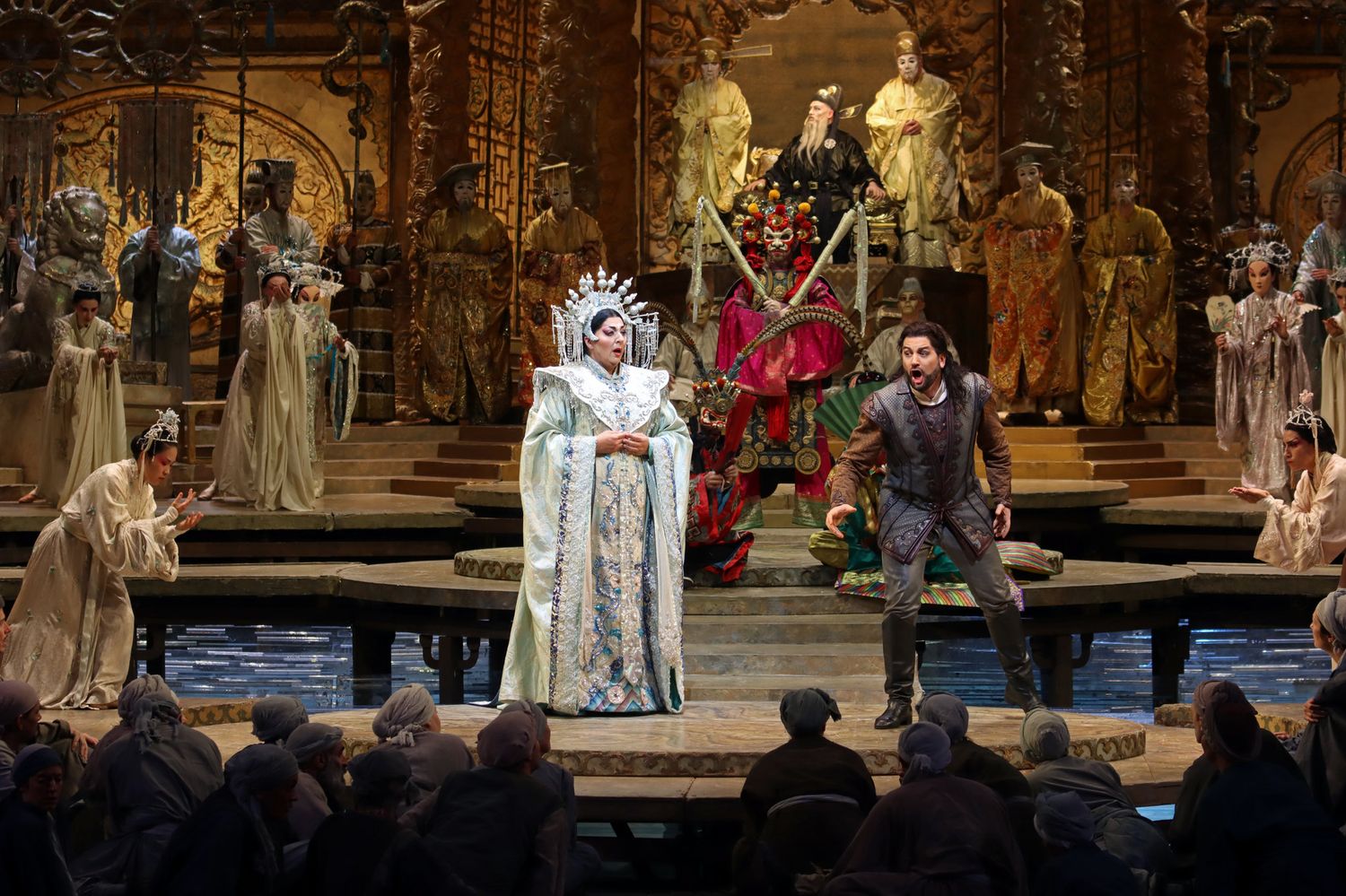Home>Events & Info>Opera>What Language Is Opera In
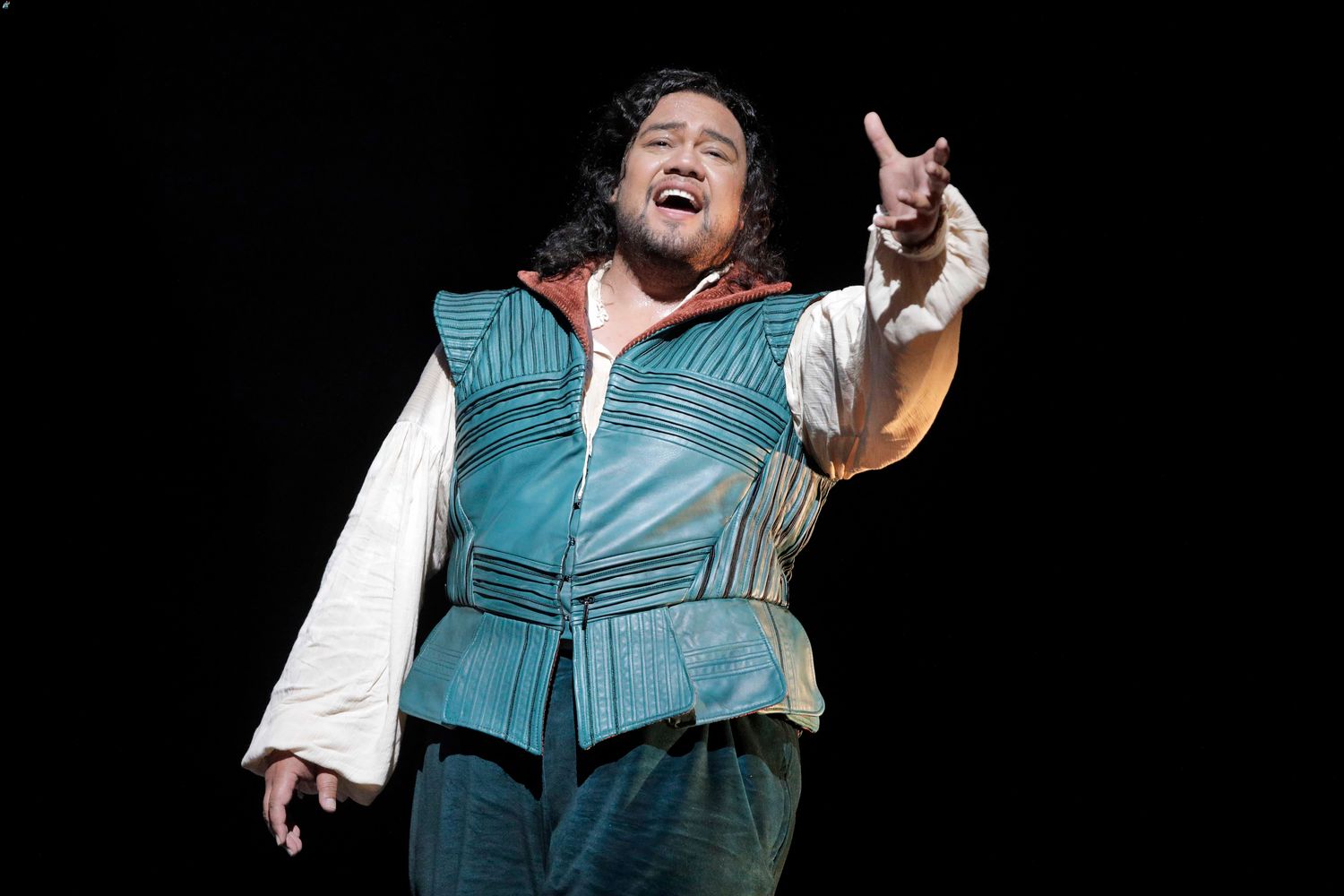

Opera
What Language Is Opera In
Published: January 6, 2024
Discover the language of opera and explore the diverse linguistic traditions that have shaped this timeless art form. Uncover the beauty and power of opera in its original languages. Learn more about the language of opera today!
(Many of the links in this article redirect to a specific reviewed product. Your purchase of these products through affiliate links helps to generate commission for AudioLover.com, at no extra cost. Learn more)
Table of Contents
Introduction
Opera is a captivating art form that combines music, drama, and visual arts to create a truly immersive experience for audiences. One of the most intriguing aspects of opera is the language in which it is performed. The language of opera plays a crucial role in shaping the overall experience for both performers and audiences. In this article, we will explore the fascinating world of opera languages, delving into their origins, development, and impact on performances.
The language of opera has evolved significantly over the centuries, reflecting the rich cultural tapestry of the regions where it has thrived. From the soaring arias of Italian opera to the powerful choruses of German opera, each language brings its own unique cadence and emotional depth to the art form. Understanding the role of language in opera not only provides insight into the historical context of the art form but also sheds light on the complexities of multilingual performances and translations.
As we embark on this exploration, we will uncover the historical roots of opera and how language has shaped its evolution. From the early days of opera in Italy to its spread across Europe and eventually the world, the influence of language is profound. We will also consider the modern-day significance of language in opera, examining how it impacts the interpretation and delivery of performances in today's diverse and globalized world.
Join us on this journey through the captivating realm of opera languages, where history, culture, and artistic expression converge to create a truly enchanting experience.
The Origins of Opera
The origins of opera can be traced back to the late 16th century in Italy, where a group of intellectuals and musicians sought to revive the spirit of ancient Greek drama. Inspired by the Greek tragedies, they envisioned a new form of musical theater that would combine poetry, music, and drama to stir the passions of the audience. This ambitious endeavor gave birth to the art form we now know as opera.
During the Renaissance, the powerful Medici family in Florence played a pivotal role in nurturing the early development of opera. In 1598, the first recorded opera, “Dafne” by Jacopo Peri, was performed in Florence, marking a significant milestone in the history of music and theater. The libretto, or text, of “Dafne” was written by Ottavio Rinuccini, signaling the beginning of a tradition where librettists would collaborate closely with composers to craft compelling narratives for operatic performances.
Italian opera quickly gained popularity across Europe, with composers such as Claudio Monteverdi and Francesco Cavalli contributing to its flourishing repertoire. The operatic style continued to evolve, incorporating elaborate stage designs, virtuosic singing, and intricate musical accompaniment. As opera spread to other regions, including France, Germany, and England, it adapted to local languages and cultural sensibilities, giving rise to diverse operatic traditions.
From its humble beginnings in the courts and palaces of Italy, opera transcended social barriers and became a beloved form of entertainment for people from all walks of life. The fusion of music and storytelling in opera captivated audiences and provided a platform for expressing a wide range of human emotions, from love and longing to tragedy and triumph.
As we delve into the origins of opera, it becomes evident that the language of opera was intricately woven into its early development, shaping the lyrical beauty and emotional resonance that continue to define the art form to this day.
The Development of Opera Languages
As opera gained momentum in the cultural landscape of Europe, the development of opera languages became a fascinating aspect of its evolution. Italian opera, with its melodious arias and expressive vocal techniques, emerged as a dominant force, setting the stage for the proliferation of operatic traditions in other languages.
During the Baroque era, composers such as Jean-Baptiste Lully in France and Henry Purcell in England began to create operas in their native languages, infusing the art form with distinct linguistic flavors. This shift marked the beginning of a multilingual opera landscape, where each language brought its own nuances and musical cadences to the stage.
German opera, with its emphasis on powerful choruses and intricate orchestration, flourished in the hands of composers like Christoph Willibald Gluck and later reached its apex with the groundbreaking works of Wolfgang Amadeus Mozart. These composers harnessed the expressive capabilities of the German language to craft operas that resonated deeply with audiences, paving the way for the German operatic tradition to thrive.
Meanwhile, in Russia, the rich literary heritage and emotive power of the Russian language inspired composers such as Pyotr Ilyich Tchaikovsky and Modest Mussorgsky to create operas that captured the soul-stirring essence of their native tongue. The grandeur of Russian opera, characterized by lush orchestration and poignant vocal melodies, found resonance both at home and abroad, contributing to the global tapestry of operatic languages.
As opera continued to expand its reach, composers in countries such as Spain, Czechia, and Poland embraced their native languages as vehicles for operatic expression, enriching the art form with diverse linguistic influences. This proliferation of operatic languages not only reflected the cultural identities of different regions but also elevated the accessibility and inclusivity of opera as a universal art form.
Through the development of opera languages, the art form transcended linguistic barriers, captivating audiences with the emotional depth and expressive power of diverse tongues. The interplay between language and music became a defining feature of opera, shaping its multifaceted identity and contributing to its enduring global appeal.
The Language of Opera Today
In the modern landscape of opera, a rich tapestry of languages continues to weave its way through the performances staged in opera houses around the world. While Italian, German, French, and Russian operas retain their prominence, contemporary opera embraces a diverse array of languages, reflecting the global nature of the art form.
Opera companies and composers are increasingly exploring the potential of multilingual productions, blending languages to create innovative and culturally resonant performances. This approach not only celebrates linguistic diversity but also fosters cross-cultural connections, inviting audiences to experience the universal themes of opera through a multilingual lens.
English-language opera has seen a remarkable surge in popularity, with contemporary composers and librettists crafting compelling works that resonate with audiences across the globe. English-language operas have the capacity to reach a broad and diverse audience, transcending linguistic barriers and inviting newcomers to experience the emotive power of the art form.
Furthermore, the emergence of multimedia opera productions has expanded the creative possibilities for incorporating diverse languages into performances. Through the use of subtitles, surtitles, and innovative projection techniques, opera companies have successfully introduced audiences to operas in languages that may be less familiar, fostering a deeper appreciation for the global mosaic of operatic traditions.
Opera festivals and international collaborations have also played a pivotal role in showcasing the linguistic richness of the art form, bringing together performers, composers, and audiences from different linguistic backgrounds. These collaborative endeavors celebrate the inherent beauty of each language, highlighting the emotional resonance and expressive nuances that define operatic performances.
As we navigate the vibrant landscape of opera today, the language of opera continues to evolve, embracing new linguistic horizons while honoring the timeless traditions of operatic expression. The fusion of languages in contemporary opera reflects the interconnectedness of cultures and the enduring power of storytelling through music, reaffirming the universal allure of this extraordinary art form.
The Impact of Language on Opera Performances
The language in which an opera is performed exerts a profound influence on the overall impact of the performance, shaping the emotional resonance and communicative power of the music and libretto. Each language brings its own unique cadence, phonetic nuances, and cultural associations, enriching the expressive palette of opera and influencing the interpretation of characters and narratives.
Italian opera, renowned for its lyrical beauty and vocal expressiveness, is intrinsically tied to the melodic contours and expressive qualities of the Italian language. The fluidity and musicality of Italian diction lend themselves seamlessly to the soaring melodies and impassioned recitatives found in works by composers such as Giuseppe Verdi and Giacomo Puccini, heightening the emotional impact of the performances.
Similarly, German opera, with its emphasis on intricate word painting and dramatic intensity, harnesses the evocative power of the German language to convey profound emotional depth. The rich consonantal sounds and complex phonetic structure of German contribute to the operatic grandeur and introspective lyricism exemplified in the works of Richard Wagner and Richard Strauss.
French opera, characterized by its elegance and refinement, draws upon the graceful phrasing and nuanced pronunciation of the French language to evoke themes of love, honor, and passion. The inherent musicality of French diction lends itself to the lyrical finesse and expressive subtlety found in operas by composers such as Georges Bizet and Jules Massenet.
Furthermore, the impact of language extends beyond vocal performance to encompass the visual and dramatic elements of opera. The interplay between language and gesture, supported by supertitles and projected translations, enables audiences to engage with the narrative complexities and emotional nuances of operas performed in diverse languages, fostering a deeper appreciation for the art form.
As opera continues to embrace linguistic diversity, the impact of language on performances remains a dynamic and integral aspect of the art form, enriching the storytelling, vocal expression, and cultural resonance of operatic experiences. The fusion of language and music in opera exemplifies the profound symbiosis between verbal and sonic artistry, transcending linguistic boundaries to captivate and inspire audiences worldwide.
Conclusion
Opera, with its rich tapestry of languages and cultural influences, stands as a testament to the enduring power of artistic expression and human storytelling. From its origins in the courts of Italy to its global resonance in the modern era, opera has evolved as a multilingual art form that transcends linguistic barriers, inviting audiences into a world of emotive beauty and profound narrative depth.
The historical development of opera languages has mirrored the ebb and flow of artistic innovation, embracing the lyrical nuances and expressive qualities of Italian, German, French, Russian, and a myriad of other languages. Each linguistic tradition has left an indelible imprint on the operatic repertoire, shaping the emotional resonance, vocal expression, and cultural significance of performances throughout the centuries.
Today, opera continues to flourish as a dynamic and inclusive art form, embracing a diverse array of languages and inviting audiences to experience the universal themes of love, tragedy, and triumph through a multilingual lens. The impact of language on opera performances extends beyond vocal delivery to encompass the visual, dramatic, and emotional dimensions of the art form, enriching the storytelling and cultural resonance of operatic experiences.
As we navigate the vibrant landscape of opera today, the fusion of languages and musical expression reaffirms the interconnectedness of cultures and the enduring power of storytelling through music. Opera’s ability to transcend linguistic barriers and celebrate the inherent beauty of each language underscores its status as a truly universal art form, captivating and inspiring audiences across the globe.
In the world of opera, language serves as a bridge that unites diverse voices, narratives, and emotions, weaving a rich tapestry of human experience that resonates with audiences of all backgrounds. As we celebrate the linguistic diversity and cultural richness of opera, we embrace the timeless allure of an art form that continues to enchant, provoke, and move us through the universal language of music and storytelling.

